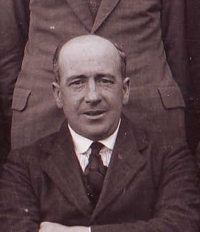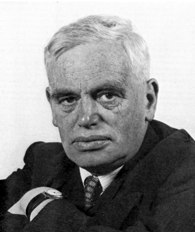The other week I suffered a minor mishap which resulted in a sharp blow to the Niagaras. Jolly painful it was too. Gentlemen of a certain disposition, I am led to believe, actually enjoy having pain inflicted on their testicles and are even induced to part with their hard-earned cash for the pleasure. Astonishing as that may seem, I have unearthed a couple of scientists who carried out a bizarre series of experiments which involved crushing their testicles with weights in the name of science.
The intrepid duo were Dr Herbert Woollard of the Department of Anatomy at St Bartholomew’s Hospital Medical School and E. Arnold Carmichael of the National Hospital Research Unit in Queen’s Square in London and an account of their experiments and eye-watering findings was published in the September 1933 edition of the Brain. What the mad-cap scientists were researching into was the phenomenon known as referred pain or reflective pain. This is where pain is perceived in a part of the body other than where the painful stimulus has occurred. Examples are where someone suffering from an angina attack would feel pain in their back, neck or shoulders rather than in their chest and where amputees attribute pain to a limb that has been amputated. As a medical phenomenon, referred pain has been acknowledged since the 1880s but there is still no definitive explanation for it.
In the early 1930s this would have seemed a fruitful area of research for Woollard and Carmichael. I have noted before that what marks out a scientist from the hoi polloi is their ability to make a massive and astonishing leap in logic to find a new and unchartered line of enquiry to explore. Their light-bulb moment was to realise that of all the internal organs the testicles were the most accessible to investigating referred pain and so they set to it.
The report is a creature of the time and so we do not know who had their balls crushed, how they were selected or whether they took it in turns. As to methodology, the victim lay spread-eagled on a table, exposing his testicles and then his colleague placed one into the pan of a scale before placing weights of varying sizes on to it. The reactions were duly noted and published. At 300 grams the victim experienced “a slight discomfort in the right groin”, at 550 grams “severe pain on the inner side of the right thigh with indefinite testicular sensation” and at 650 grams “severe testicular pain on the right-hand side of the body”.
The problem was that from the perspective of investigating referred pain, these findings were not very helpful as they had not eliminated the feeling of pain from the affected body part. So Woollard and Carmichael developed a further twist, so to speak, by numbing all the nerve endings leading to the testes. Quite how this was accomplished was not revealed in the report and so the mind is left to boggle. The experiments began again but the scientists’ ambitions were thwarted because try as they could they were unable to eliminate the pain experienced in the testicles.
So this line of enquiry shrivelled like a wrinkled prune because despite their convenience the testicles proved to be a tad too sensitive. Unsurprisingly, no other scientists have picked up the baton.
If you enjoyed this why not check out Fifty Curious Questions by Martin Fone. Available now. Just follow any of the links
http://www.authorhouse.co.uk/Bookstore/BookDetail.aspx?BookId=SKU-001142053
http://www.authorhouse.com/Bookstore/BookDetail.aspx?BookId=SKU-001142053


